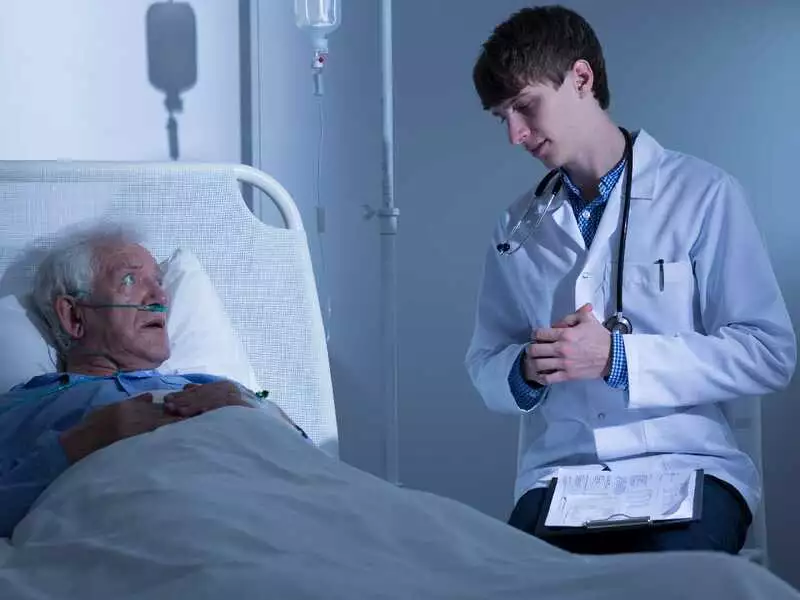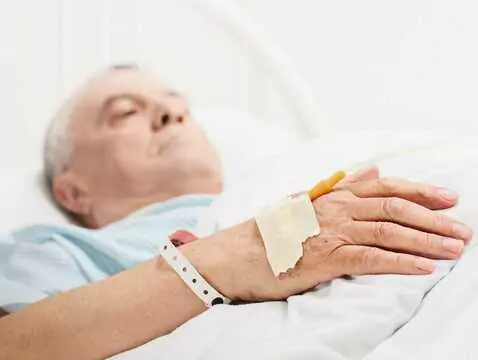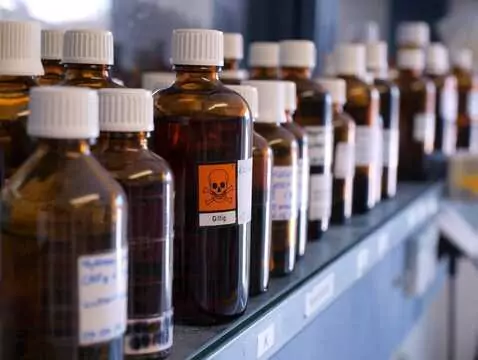The problem of pressure sores mainly affects immobile patients who spend most of the day in one position. At risk are patients in intensive care units, orthopaedic wards, with multiple injuries, neurological deficits, patients in terminal stages of cancer, cachexia, under hospice care. Due to the severity of the problem of pressure ulcers, the therapeutic difficulties, they require constant care by specialised medical personnel, combined preventive measures and effective, thoughtful therapeutic management.
Prevention
Prophylaxis against bedsores should be implemented in every patient at risk - at risk of long-term immobilisation, lying down, in poor physical condition preventing independent movement - even before the first symptoms of the initial phase of bedsores appear. It is extremely important to observe the patient, carefully examining the whole body on a daily basis.
Once the symptoms of the initial stage of pressure sores are observed, i.e. reddening of the skin that does not disappear after releasing the pressure of the examining finger, more advanced changes - skin and epidermal blisters, superficial abrasions and maceration of the epidermis in the places of the greatest gravitational pressure, actions should be implemented, not so much preventive, but therapeutic.
Particular emphasis is placed on proper hygiene of the patient. The whole body should be washed thoroughly at least once a day, with particular attention paid to skin folds, the perineal area and the anus, and after washing, dried. The toilet is the ideal time to examine the skin - every centimetre, with particular attention to the areas most at risk of developing pressure sores, but not only - so as not to overlook the beginning of the localised process of pressure sores, even in areas that are not predisposed. In addition to washing, lubrication with products dedicated to skin at risk of developing pressure sores is essential. They should lubricate the skin and prevent it from excessive drying, soothe already formed damage to the epidermis, soothe irritation, smoothen and make it more elastic. Skin care products should contain substances that stimulate the renewal of the epidermis, ideally the pH of the product should be neutral for the skin, and there should be no artificial colours, fragrances, preservatives or parabens. They should be used regularly, after every wash (oils, lotions), and should ideally have an antibacterial effect. It is also important to keep the patient's nails cut short. Clothing worn by the patient should preferably be made of natural fabrics, soft, without thick seams or elements that irritate the skin (e.g. hard collars, cuffs, elastic bands). Even when the patient is lying down, footwear should be perfectly fitted to the shape of the foot, comfortable, without pressure.
Thediet of a patient with bedsores should not lack complete proteins, vitamins and mineral salts. This protein guarantees the correct regeneration of damaged tissues, strengthening general and local immunity, besides building muscles, whose activity helps in the active fight against bedsores.
Thehome of a chronically ill patient with bedsores, like the hospital room, should be equipped with comfortable furniture adapted to the patient's needs. Whenever possible, the bed should have an anti-bedsore mattress. The patient's room should be equipped with equipment helpful for the patient and his/her carers to facilitate rehabilitation and daily functioning (handrails, ropes, handles). Bed linen should be changed frequently (preferably daily, if the patient is contaminated - as needed), well dried, not stained, without hard seams or buttons. Sheepskin textiles are recommended - it creates a soft surface that gives the patient a sense of comfort, prevents pressure on the parts of the body with the strongest contact with the ground, eliminates friction, provides adequate skin moisture and access to fresh air.

photo: panthermedia
As the mechanism of pressure ulcers is mainly focused on permanent pressure on one area of the body, the prevention of pressure ulcers should take into account the need for frequent, regular changes of body position - every 2 - 3 hours. In addition, treatments to improve the blood supply to the skin carried out by qualified physiotherapists or those trained by them at home are recommended: light massages, patting. In addition, emphasis is placed on the patient's improvement, rehabilitation procedures: passive exercises for paralysed parts of the body, active exercises for more mobile patients, carried out regularly with the assistance of a physiotherapist and a physiotherapist trained to work with such patients.
A number of aids for pressure ulcer prevention are available on the market. These include anti-bedsore pads that reduce pressure on stressed areas of the body, anti-bedsore discs (occiput, elbows, knees, heels), sponge pads (buttocks and hips). Pneumatic cushions used in the buttocks area prevent excessive pressure on the ischial tuberosities, ensure better blood circulation and, thanks to their design, perfectly adapt to the patient's body shape.
For daily hygiene and frequent changes of position, especially in patients with paralysis or paresis of the limbs, the use of special glide mats is recommended. These allow the patient to be transported with little effort by the carer, even if the patient is overweight.
Anti-decubitus mattresses are recommended for all chronically bedridden patients before the first symptoms of decubitus are observed. Their specific design reduces pressure and stimulates blood circulation, actively preventing the formation of pressure sores and speeding up the healing process of existing ones. Static mattresses distribute the weight of the person lying on as large a surface as possible, thereby reducing pressure points, e.g. in the sacrum or heel area. Dynamic mattresses, with changing pressure, made up of two or three rows of chambers alternately filled with air, provide variable pressure on the patient's body and support blood flow to the tissues (alternating pressure at different points).
The diet of a patient with bedsores should not lack complete proteins, vitamins and mineral salts. This protein guarantees the correct regeneration of damaged tissues, strengthening general and local immunity.









